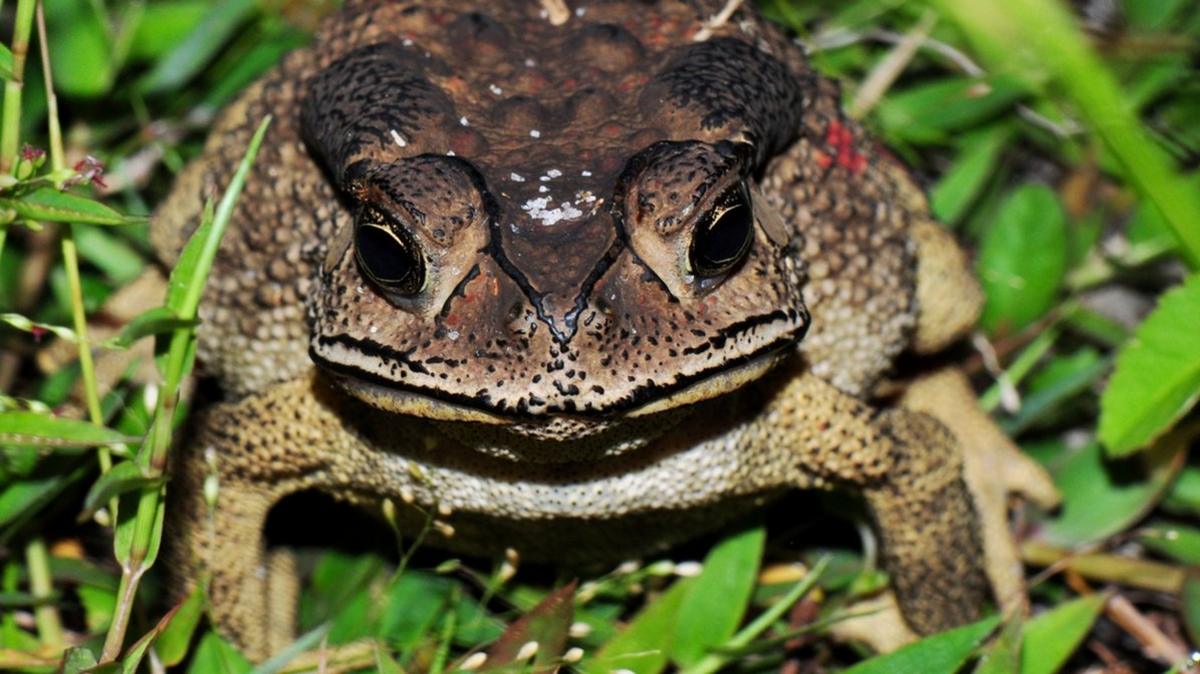Monitor lizards trained not to eat toxic cane toads
- Published
How do you train a lizard not to eat poisonous toads?
Scientists have devised a radical solution to reduce the damaging impact of Australia's deadly cane toads.
They have trained wild monitor lizards, known locally as goannas, not to eat the toxic amphibians.
They did this by feeding the reptiles small, less potent cane toads. Many that tried the toads once did not make the same mistake again.
The researchers say that extending the trial could help the continent's wildlife.
The study is published in the Royal Society journal, Biology Letters, external.
Lead researcher Georgia Ward-Fear, from the University of Sydney, said: "We've been very surprised by the results, by the amount of time that some of these lizards have actually retained this knowledge and survived in the presence of a high-density of cane toads, which is basically unheard of in the wild."
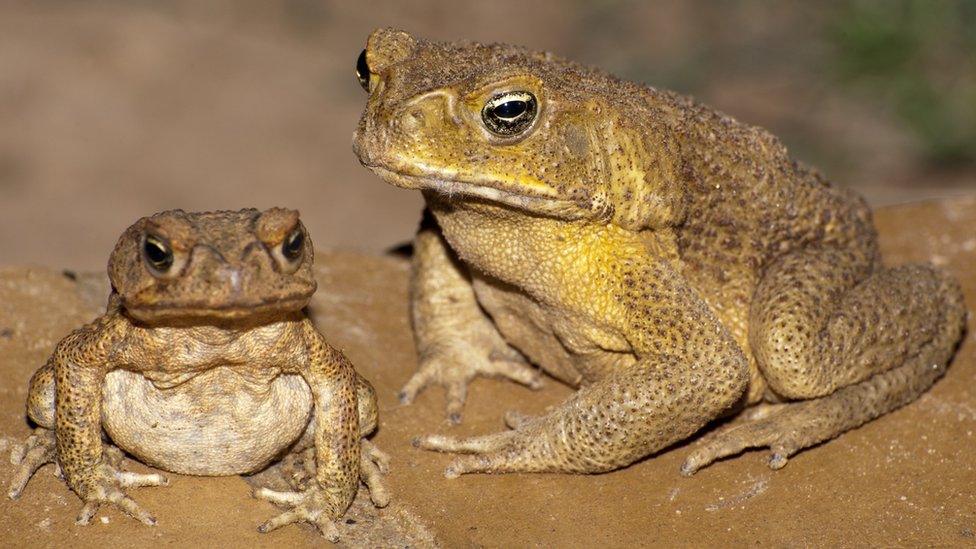
Smaller cane toads are less of a toxic mouthful than the adult variety for goannas
Cane toads were introduced to Australia in the 1930s to control sugar cane pests.
But the subsequent spread has been unstoppable, devastating the continent's animals.
Among the hardest hit are the yellow-spotted monitors (Varanus panoptes). Their population is estimated to have plummeted by 90%.
When the toads invade a new area, these yellow-and-black-spotted reptiles feast on the amphibians, and subsequently die.
"A goanna only has to mouth a toad for less than 30 seconds and it can kill them," said Dr Ward-Fear.
"This species is quite abundant in ecosystems ahead of a cane toad invasion, and then as we see the invasion move through, they are basically wiped out of the landscape."
In the trials, the researchers tracked down wild lizards before the toads descended.
Dr Ward-Fear explained: "We presented them with a small toad via our very technical apparatus: a telescopic fishing pole. The toad had a little cotton belt attached to it.
"We sidled up to the goanna in a very stealthy manner and extended the fishing pole."
The young toads made the lizards sick, but were not toxic enough to do lasting harm.
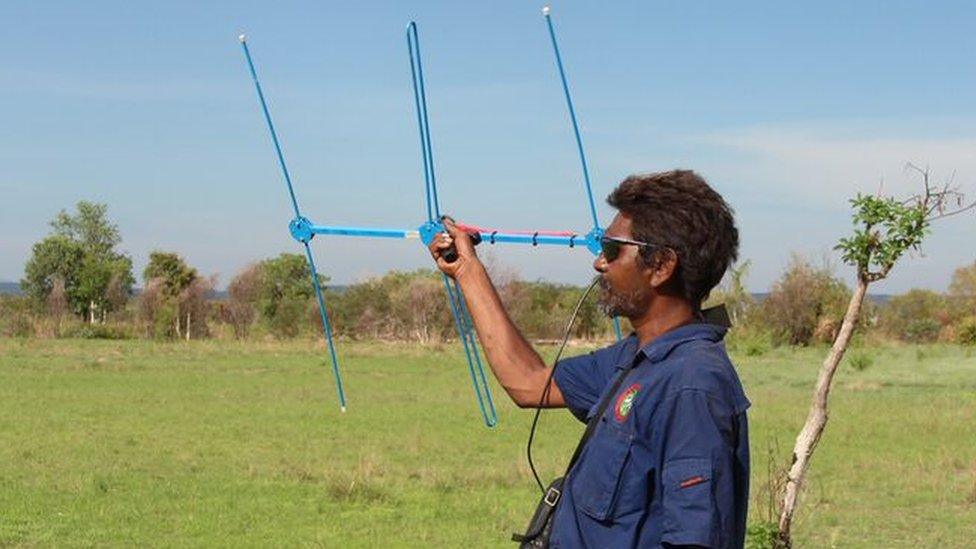
The research team used radiotrackers to monitor the lizards' survival rates
The scientists then attached radio transmitters to follow the goannas as the amphibians arrived in the area.
Many of the 16 lizards who'd already tasted toad did not make the same mistake again - and more than half survived during the 18-month study period.
The team also followed 31 "untrained" lizards that had not eaten the toads.
"We saw the goannas that had not had a negative experience with the small toad died very quickly. They all died within three months of the natural cane toad invasion arriving at the site. At the end of the study, every untrained goanna had died."
The scientists say the study suggests goannas have the ability to learn from experience and retain that knowledge over a long period of time.
Dr Ward-Fear said: "This study provides the proof of principle that this strategy could be very effective. Employing it in the wild could potentially have a really large positive impact on the goanna population."
Follow Rebecca on Twitter, external
- Published3 February 2015
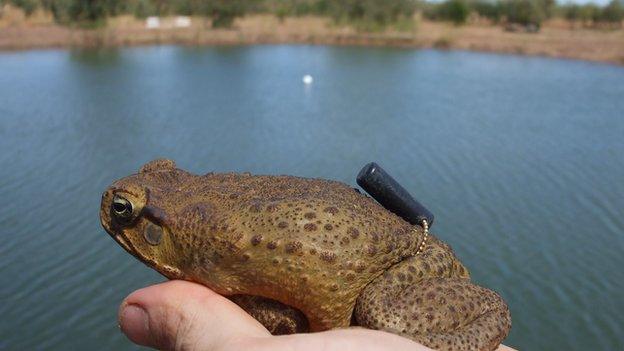
- Published7 April 2012
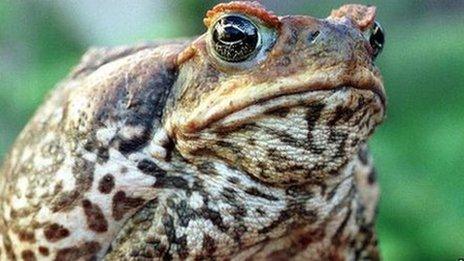
- Published29 May 2014
